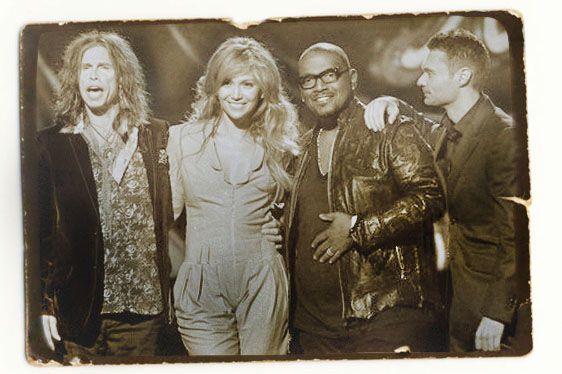

Twenty years ago, the highest-rated show on television was Cheers, and the average age of its viewers was a spry 34.7 years old. In the modern era, American Idol rules the roost, but despite the fact that itÔÇÖs a talent competition for youngÔÇÖuns (as opposed to an adult comedy set in a bar), the Idol viewerÔÇÖs median age is almost a decade older at 43.8, and the season prior, it was even worse: The No. 1 show was NCIS, which had the median viewer age of 57.4. The Wall Street Journal claims that this demographic hike is going to result in more ads aimed at older viewers, but weÔÇÖre more curious about why the TV audience for the broadcast networks is getting so old in the first place. Here are three of the most likely reasons.
Young People Watch Less TV
What transformed Glee from a solid first-season hit to a pop phenomenon that Fox built its spring schedule to accommodate? That ratings uptick didnÔÇÖt come from the high schoolers downloading Glee music on iTunes ÔÇö instead, it meant that an even larger audience of older viewers were sampling the show, and as a result, GleeÔÇÖs median viewer age went from 32 to 38 in less than a year. (Though that still makes Glee one of the most youthful shows on broadcast television; itÔÇÖs an older average than series like Friends and ER had when they topped the Nielsens.) The younger demographic has become increasingly hard to pin down in front of a television because despite the fact that they were raised on the medium, they can now satisfy their screen addictions by playing video games or going online (and the fact that theyÔÇÖll watch many TV shows on the Internet or time-shifted via DVR isnÔÇÖt helping to strengthen their ratings pull).
The Fall of Sitcoms
Half-hour comedies used to dominate the television landscape, but in last weekÔÇÖs total weekly ratings, only two even made the top 20 highest-rated shows: the suddenly imperiled Two and a Half Men (which ranked ninth) and Mike & Molly (which came in twelfth). Simply put, sitcoms pull in a younger audience than dramas ÔÇö the top twenty chart for the 18 to 49 demo includes seven comedies and vaults Modern Family to the top of the pack ÔÇö but networks are still sitcom-shy, preferring to program dramas and procedurals instead. The scarcity of the family comedy has really been reflected in the ratings: Home Improvement pulled in an average viewer age of 34 almost twenty years ago, a stat most shows would currently kill for.
The Rise of Cable
Though the WSJ article doesnÔÇÖt go into it, cable may be most to blame for the graying of the network audience. Cable shows like Jersey Shore skew younger ÔÇö and beat shows like GreyÔÇÖs Anatomy in the favored demos ÔÇö because they can afford to appeal to more niche viewers; meanwhile, networks have to fight over the older viewers less inclined to channel-surf (even if theyÔÇÖve consistently found their way to TNT and USA, which have also seen their median ages increase). ItÔÇÖs undeniable that television is getting much, much older, and that the biggest portion of the viewing audience for broadcast networks now comes from a demographic that advertisers used to shun; the question is whether executives and marketing departments will accept their fates and age gracefully as cable channels continue to chip away at their audience. (Then again, nipped and tucked television shows donÔÇÖt exactly provide a good model for vanity-free aging. Do they make Botox for networks?)

